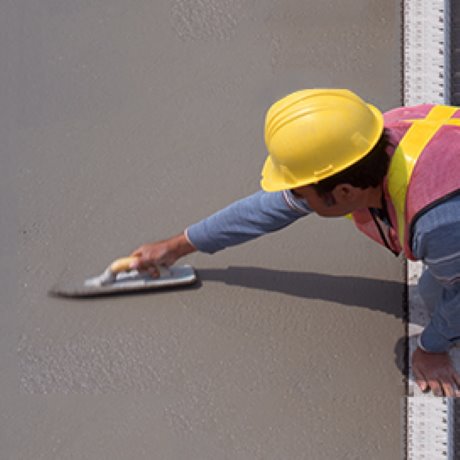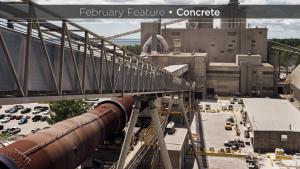Researchers at a Swiss institution have come up with an innovative mix for high-performance, self-consolidating concrete (HPSCC) which is not only fire resistant but is also less prone to shrinkage.
Pietro Lura and Giovanni Peitro Terrasi of Empa, the Swiss Federal Laboratories for Materials Science and Technology and the Institute for Building Materials, filed patents in 2014 for the concrete which reduces fire spalling through the use of super-absorbent polymers (SAP) and polypropylene fibres (PP).
It’s an important development because in striving for sustainability in pre-cast concrete design, the trend has been to use less cement in thin-walled structural elements with HPSCC, usually with carbon fibre reinforced plastic (CFRP).
There’s only one problem: while the structures are sound, when exposed to fire directly or heat, they tend to explosively spall and then, ultimately, fail.
Just as wood crackles as it burns in a chimney or campfire, when concrete is exposed to fire it chips and flakes — a process known as spalling. Both effects are due to the same phenomenon: water trapped within the piece of wood or concrete element vapourizes due to the high temperature. As more water vapour is produced the pressure within the wood or concrete structure increases. In wood this causes the cells to burst with a crackling sound, creating cracks in the logs.
In concrete structures, chips split away from ceilings, walls, and supporting pillars, reducing their load bearing capacity and increasing the risk of collapse in a burning building.
"The main mechanisms of spalling appear to be pressure build-up of vapour during heating in the fine pores of the HPC (high-performace concrete) matrix, which cannot be relieved because of its low gas permeability, and different expansion rates between aggregates or reinforcement and mortar," they note in a paper written on the subject. "There are three main factors influencing spalling: high heating rate, low gas permeability and high moisture content (above two to three per cent)."
Further, they note, spalling is made worse by concrete compression which makes pre-stressed concrete a higher risk in fires.
One of the ways around that is to embed organic fibres such as polypropylene in different length into the mix. These fibres melted when heated and create channels through which the vapour can escape instead of building up under pressure.
The trick is to get the right combination of length and density of the fibres to provide a network to effect the vapour release.
The downside is that too much fibre causes problems with the self-compacting aspect of the HPSCC.
Their solution was to look at using dry, super-absorbent polymer particles. It’s a common practice to use them to absorb water initially in the fresh mix which is then released during the curing process.
"The idea of combining the super-absorbent polymers (SAP) with the polypropylene fibers came to me while discussing with Terrasi the issues of fire spalling in thin, pre-stressed concrete elements, something he has been working with for a long time," said Lura
"I had been using SAP for internal curing in high-performance concrete for almost 10 years, and it occurred to me that you could reach percolation of the pore system also by combining long fibers that melt at around 160 C and the voids left over by the SAP. I also knew adding SAP would allow us to reduce the amount of fibres."
The two went to work designing a mix. They created a system of voids "in the cement paste that are able to bridge the channels created by molten PP fibers in HPSCC subjected to fire and allow their percolation at lower fiber loading (e.g. at 2 kg/m3 instead of 5 kg/m3)," they write.
"This reduces the likelihood of fire spalling and improves the fire resistance of the HPSCC mixtures, without losing the self-compacting properties."
As things turned out, it worked.
"This was purely a speculation and the theory came out all at once," Lura said.
"We were lucky that the theory worked immediately when we tried it out. Of course, it helped that we had a lot of experience with both additives, PP fibres and SAP. But it was a bit of a surprise that the idea worked immediately, because in my experience, it normally takes a very long time to make very good ideas work in reality."
The concrete can be mixed like any other formula, as a continuous mix or as a batch, the researchers say and require no special process or machinery.
"The components may be premixed, combining all liquid components and water and all dry components, followed by mixing dry and liquid compositions to obtain the final cementitious mixture," they say.
"Our invention solves the problem of fire spalling of self-compacting, high-performance concrete by adding a combination of polypropylene fibers and superabsorbent polymers," says Lura.
"We have been granted a U.S. patent and will be granted a European patent in the next few weeks. At the moment, we are looking for industrial partners to develop this solution. We have contacted both producers of concrete elements and also large companies active both in the cement and in the concrete business, and even in the admixture business. Some companies have shown interest but this is a difficult time for investing in new products in the construction business."
He’s hoping the formula could be in use in two or three years.
"The cost of the raw materials would increase, but only of a couple of percentage points because the amount of SAP added is small," he said.
"On the other hand, some companies spend substantial amounts of money in extensive testing for fire safety and our approach could help in cutting these costs."




Recent Comments
comments for this post are closed